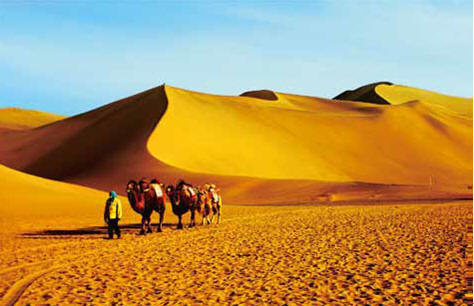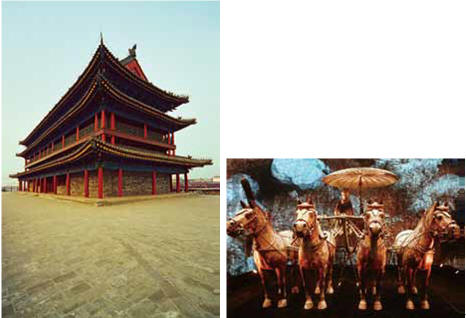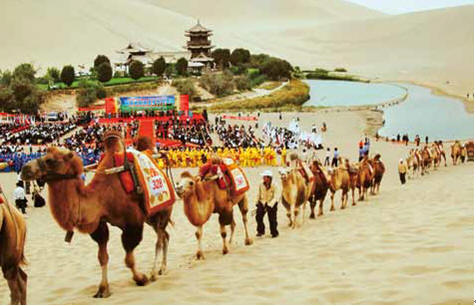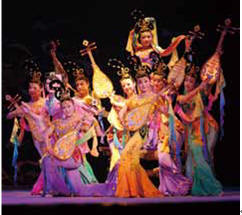SILK ROAD

The Silk Road, or Silk Route was an important path for cultural, commercial and technological exchange between traders, merchants, pilgrims, missionaries, soldiers, nomads and urban dwellers from Ancient China, Ancient India, Persian Empire and Mediterranean countries for almost 3,000 years.
The Beginning: Xi'an
Xi'an sits on an ancient site. The land is fertile, renewed yearly by the silt from the Yellow River.

The Han emperor, Wudi, needed allies to guard against threat from a strong neighbor. So in 119 B.C. Wudi sent Zhang Qian to form an alliance. Zhang Qian's travels took him toward India. When Zhang Qian returned and told Emperor Wudi of what he had seen in these western states. He was sent back with a large delegation and items to trade. Silk was an immediate hit.
Trading Center : Dunhuang
Dunhuang lies at the western end of the Gansu Corridor. The name Dunhuang originally meant "prospering, ourishing"-- a hint that Dunhuang must once have been an important city.

Foreign merchants and monks from the West as well as officials and soldiers from central China brought their own cultures to Dunhuang and made the trading center a cultural "melting pot." Many economic, military, political and cultural activities took place at this cross-road.

The world-renowned Mogao Grottoes, also known as the Caves of a Thousand Buddhas, is the largest and richest ancient art treasure in the world.




